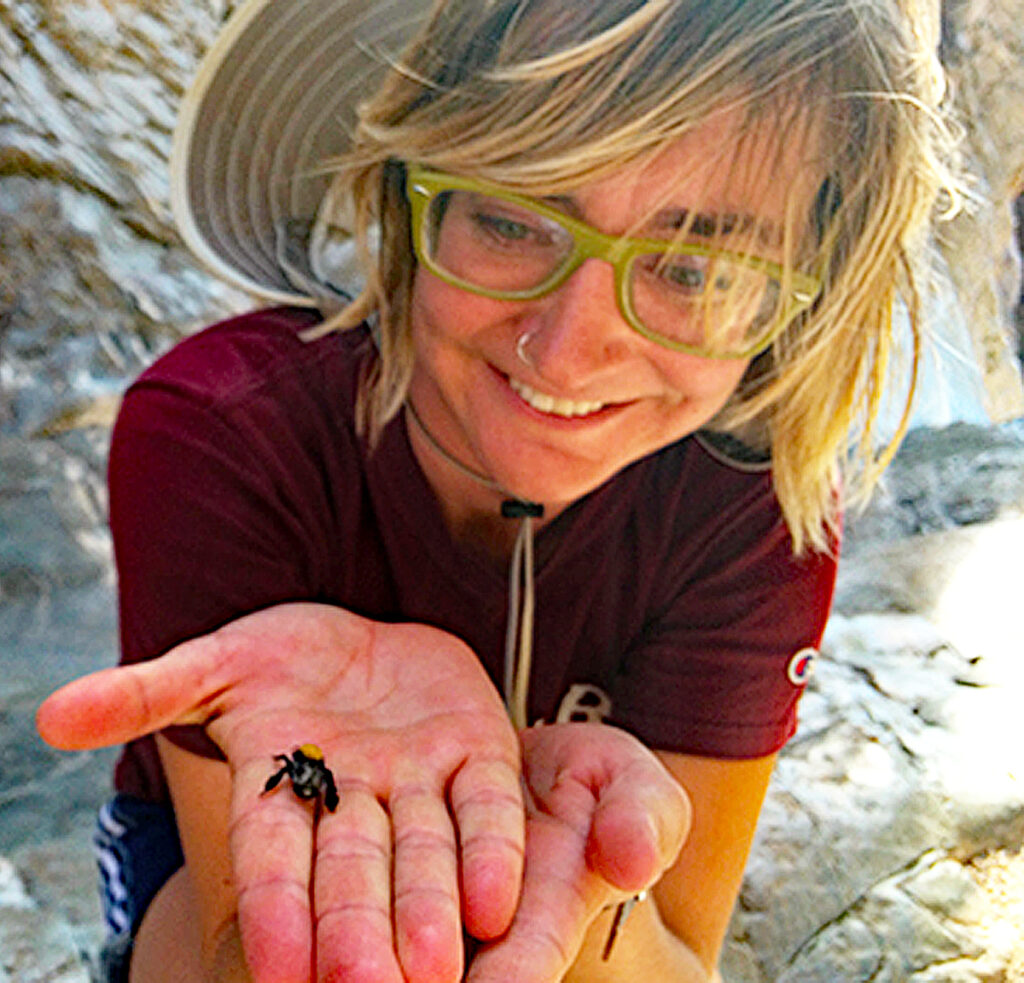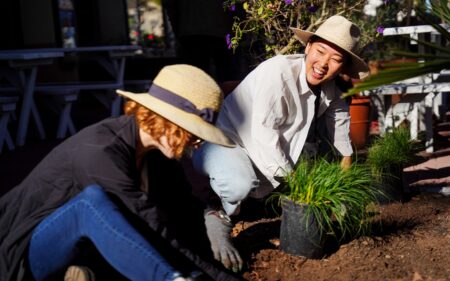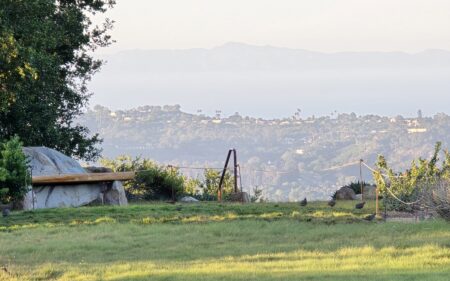The Garden’s Sarah Cusser Wins Research Award
We are proud to share the news that Sarah Cusser, Ph.D., Terrestrial Invertebrate Conservation Ecologist at the Garden, has been awarded the Early Career Researcher Award from the prestigious Ecology Letters journal for her outstanding contribution to research.
The winner was selected by the Senior Editors of Ecology Letters from nominations of papers accepted in 2022. Sarah’s paper investigated long-term ecological research, asking the question of how long it takes for population level field experiments to provide meaningful results.
While she published this paper before joining the Garden, we’re lucky she’s brought these skills and knowledge here. The results will also be put to work as we think about long-term research at one of our multi-faceted and super diverse field sites, the Carrizo Plain National Monument. Sarah shares some insight behind her research and the published paper with us below.

What inspired your study and resulting paper?
Sarah: Right after I received my Ph.D, I was a postdoc at Michigan State University’s Kellogg Biological Station. It is one of 28 LTER sites, funded by the National Science Foundation, and has a wealth of data covering 30 years of data for several studies.
They encouraged me to look for patterns, so I began to explore if it was possible to determine how long it takes for long-term research projects to get consistent results. One of my collaborators, Dr. Christie Bahlai from Kent State University, developed a “moving-window algorithm” that identifies patterns over time and applied it to a Kellogg research project.
Once we did that, we realized that the algorithm could be used for all kinds of LTER studies.
Why is this study relevant?
Long-term, not short-term, studies are needed to solve the long-term problems we face in today’s world.
For the first time in the history of science, thanks to LTER, we have a wealth of long-term data, meticulously gathered, over a large physical area. This allowed us to quantify the importance of long-term studies for the first time.
However, short-term experiments from 1 to 5 years are the benchmark in ecology, as they match with typical grant cycles and the length of graduate programs. Problems have occurred because ecologists use short-term experiments to address long-term questions. This has the potential to be misleading, either by capturing only short-term trends or failing to detect trends at all.
How was the study conducted?
We reviewed nearly all of LTER’s 7,000 collections of data (datasets) available at that time. Using a set of requirements, we selected 100 datasets from 28 distinct studies of both plants and animals from 12 LTER sites across the country.
We predicted and confirmed that highly variable environments require longer periods to detect consistent results. For example, locations with big changes day-to-night temperatures or in the amount of available sunlight will need more time to study than those along the equator, where they are more constant. That is also true for experiments investigating potentially slow-to-change scientific groups (taxa), such as plants, which more often showed misleading short-term trends.
Were there any surprises from the findings.
The biggest surprise has to do with how often short trends were misleading, where with only a short subset of the data we would have confidently concluded something untrue. We found that a short-term study could confidently come to a conclusion, which turned out to be false upon further or longer investigation. In 15 to 20 percent of the studies we looked at, the outcomes reached after only a short-term study would prove to be totally contradictory to a long-term study.
At the Kellogg Station, for example, they have 30 years of study related to “no-till” farming, in which farmers leave the stubble of last year’s harvest and plant directly into that, rather than ripping up, or tilling, the soil every year to replant. Had that study been for less than 10 years, they would have gotten a contradictory result to the one shown after the 30-year study. The short-term data show that no-till is bad for yield, for the jobs that insects do, and in other areas. Even with variation between years, the overall outcomes didn’t emerge until after 10 years of study.
Nearly half of the studies, 46 out of 100, we investigated require 10 years or longer to reach stable and consistent results, and four studies required longer than 20 years.
Are there long-term studies here at the Garden?
We are currently digitizing our data so we can keep track of plants over a long period of time – not only where they came from, how they do in their new environment in the Garden, and pollination, reproduction, and interactions with insects, for example. We’re looking at our priorities for further study right now.
Sarah co-authored the paper with Jackson Helms IV, Christie A. Bahlai, and Nick M. Haddad. Some of the findings will be presented at the LTER 2022 All Scientists’ Meeting held September 20 to 23 in Pacific Grove, California.
 Donate
Donate




